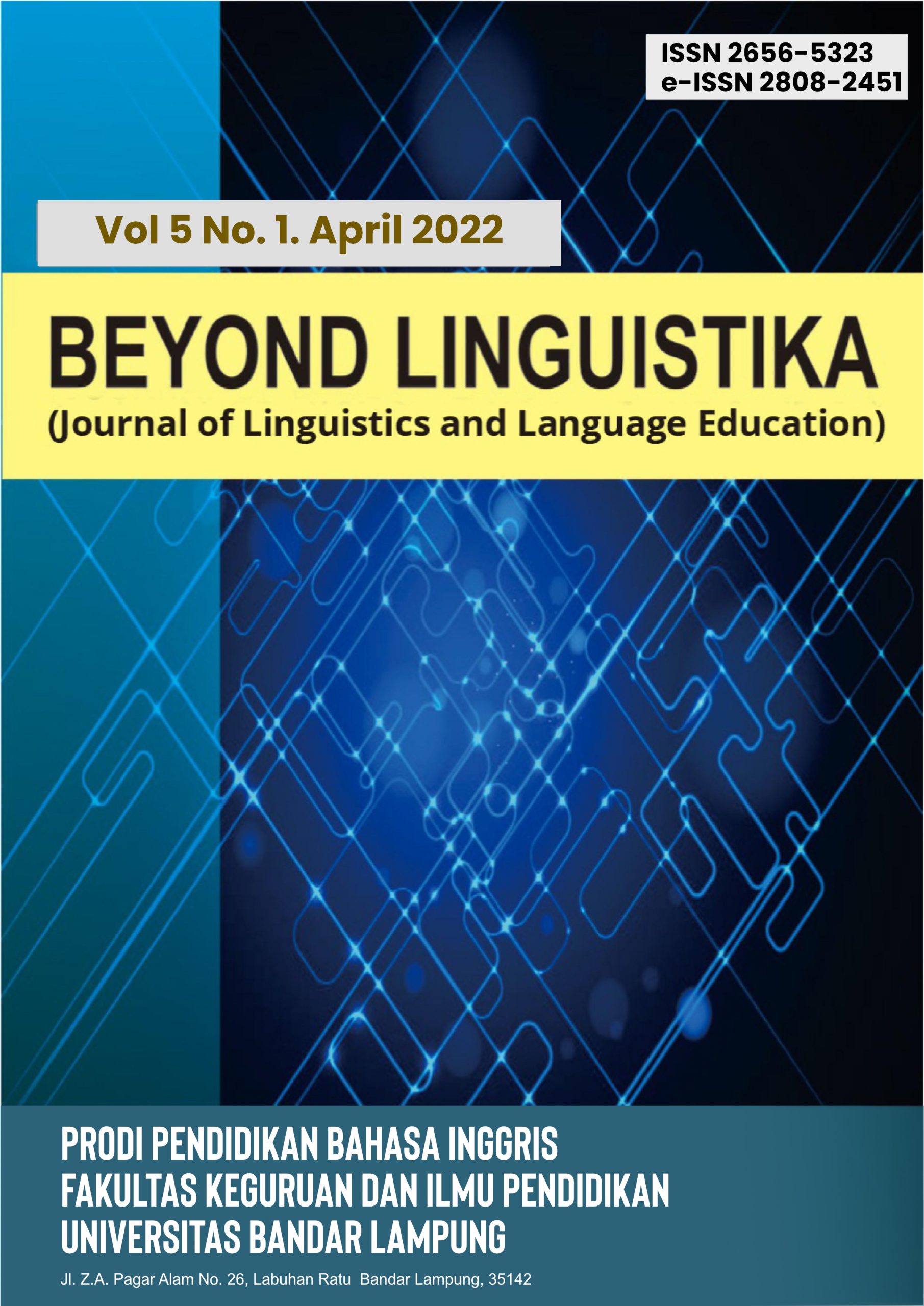THE ANALYSIS OF TURN TAKING STRATEGIES IN EFL CLASSROOMS
Abstract
Keywords
Full Text:
PDFReferences
Al-Ghazali, A. M., & Alrefaee, Y. (2019). Silent Pauses in the Speech of Yemeni EFL Learners. ELS Journal on Interdisciplinary Studies in Humanities, 2(1), 39-48. https://doi.org/10.34050/els-jish.v2i1.6142
Austin, J.L. (1962). Sense and Sensibilia, Oxford, Oxford University Press.
Brown, H. D. (1994) Principles of Language Learning and Teaching. Third Edition. New Jersey: Prentice Hall Regents
Etikan, Ilker. (2016). Comparison of Convenience Sampling and Purposive Sampling. American Journal of Theoretical and Applied Statistics. 5. 1. 10.11648/j.ajtas.20160501.11.
Gee, James Paul (2005) An Introduction to Discourse Analysis: Theory and Method, Second Edition. London: Routledge.
Giles, H., & Smith, P. M. (1979). Accommodation theory: Optimal levels of convergence. In H. Giles & R. St. Clair (Eds.), Language and social psychology (pp. 45-65). Oxford: Blackwell.
He, Qingshun. (2014). Implications of Lexical Repetition Patterns for Language Teaching. International Journal of Linguistics. 6. 46. 10.5296/ijl.v6i4.6115.
Hutchby, Ian and Robin Woffitt., (1998) Conversation Analysis: Principles, Practices and Applications. Malden: Blackwell
https://dictionary.cambridge.org/dictionary/english/explicit
Jefferson, Gail (2004). “Glossary of transcript symbols with an Introduction.” In Conversation analysis: Studies from the first generation, ed. By Gene H. Lerner, 13.31. Amsterdam: John Benjamin.
Mazeland, Harrie. (2008). Inleiding in deconversatieanalyse.10.13140/RG.2.1.3639.5362.
Nation, I.S.P. (2001). Learning Vocabulary in Another Language. Cambridge: Cambridge University Press.
Sacks, H., Schegloff, E., & Jefferson, G. (1974). A Simplest Systematics for the Organization of Turn-Taking for Conversation. Language, 50(4), 696-735. doi:10.2307/412243
Stenstrom, Anna-Brita (1994) An Introduction to Spoken Interaction. London and New York: Longman.
Verderber, Rudolph F. dan Kathleen S. Verderber. (2008). Communicate! 12th ed. USA: Thomson Higher Education.
DOI: http://dx.doi.org/10.36448/bl.v3i2.1817
Refbacks
- There are currently no refbacks.















